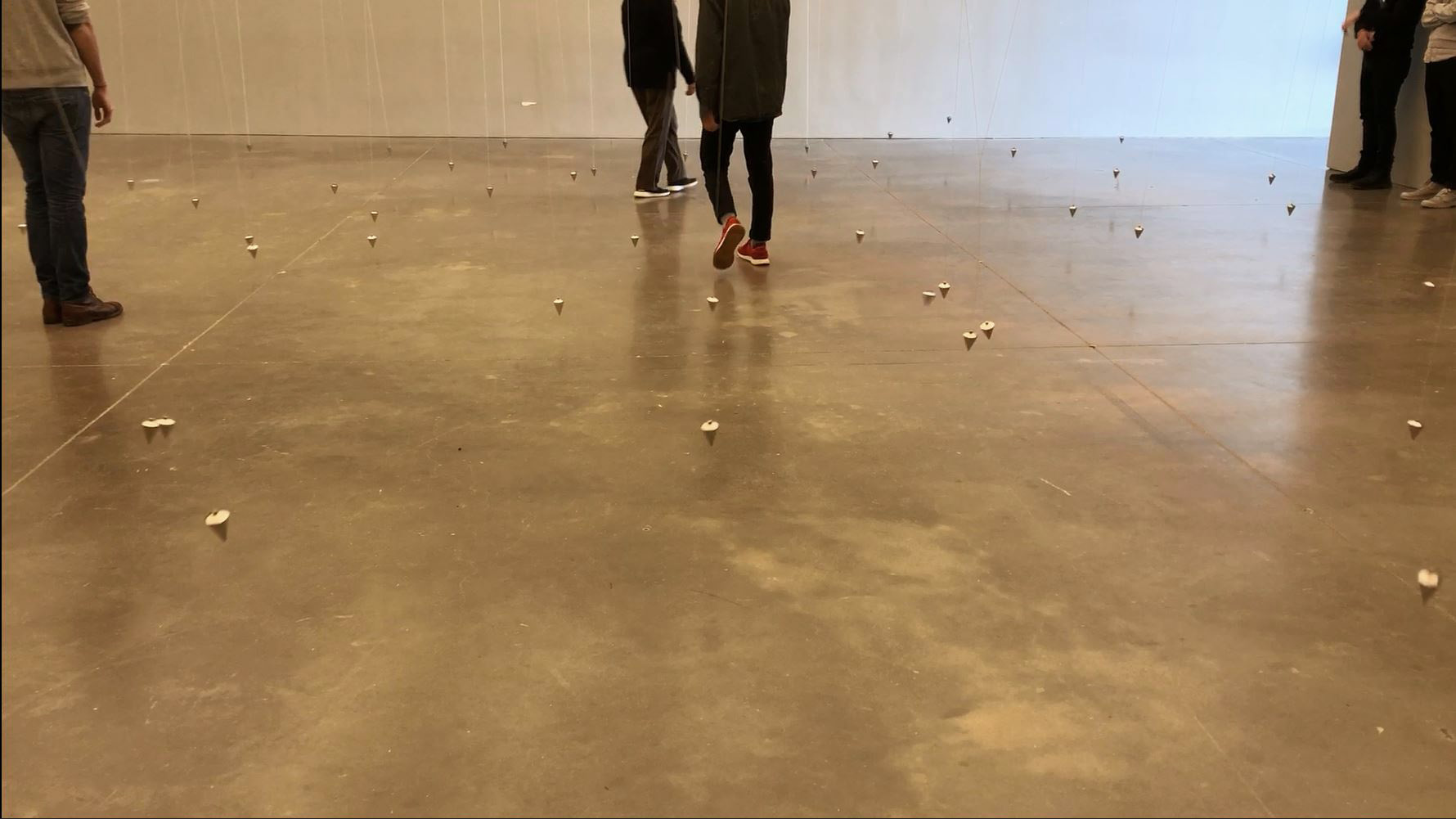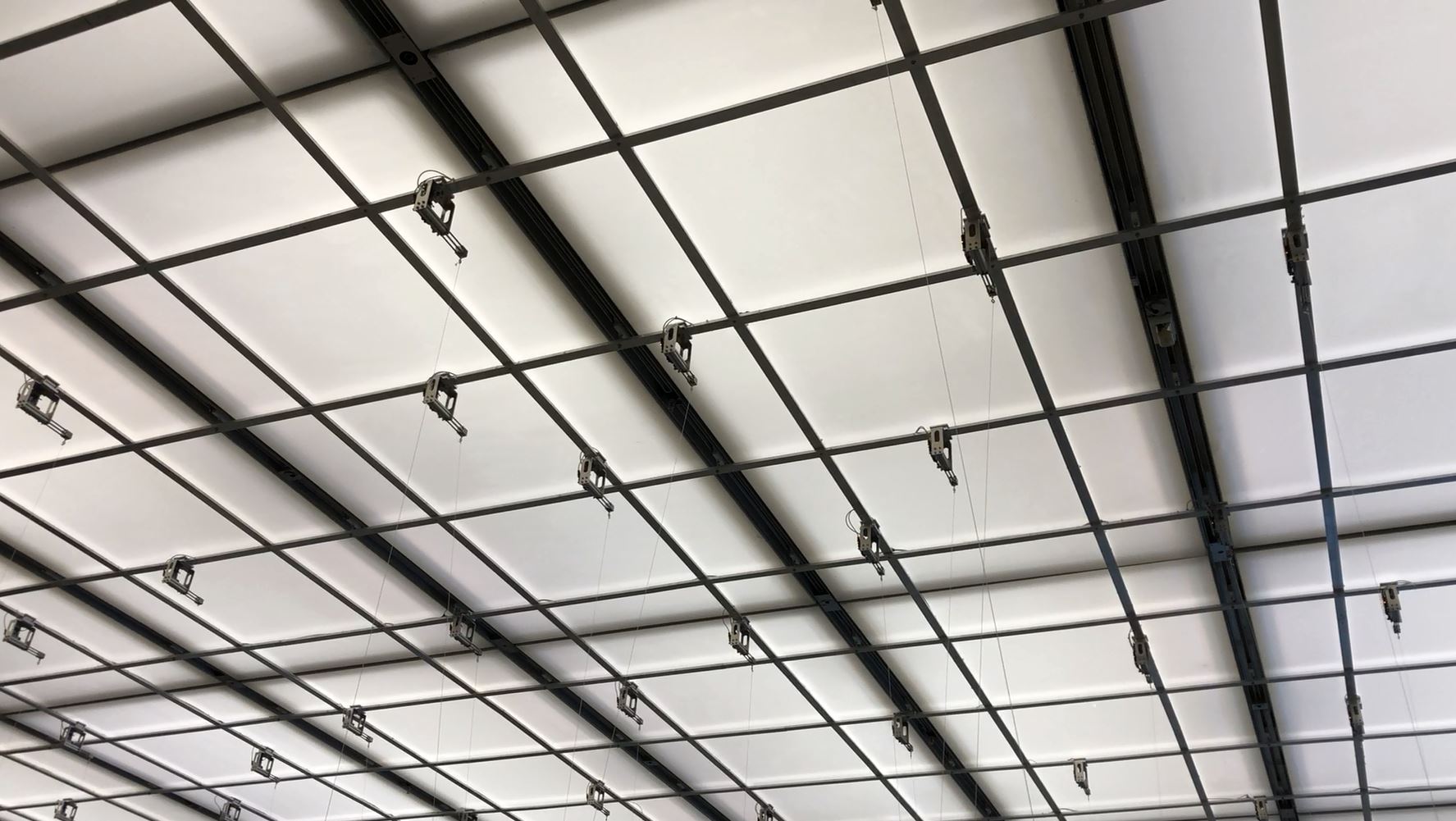This week’s contributing blogger, Joric Barber, is a fifth year undergraduate student at Northeastern University studying Architecture.
VoCA is pleased to present this blog post in conjunction with Associate Professor of Contemporary Art History, Gloria Sutton’s Spring 2019 Honors seminar, The Art of Visual Intelligence at Northeastern University. This interdisciplinary course combines the powers of observation (formal description, visual data) with techniques of interpretation to sharpen perceptual awareness allowing students to develop compelling analysis of visual phenomena.
“Please do not touch the artwork.” Much of art clearly delineates artwork and viewer. Museum attendees are cautioned, blocked, barricaded and told to step away. Docents ask visitors to step back and stanchions create clear barriers around works of art. The museum is often a place of borders and restrictions separating museum visitors and the artwork they are there to experience. However, many contemporary artists, including William Forsythe, turn this tradition on its head. Forsythe’s piece, Nowhere and Everywhere at the Same Time, No 3 (2015) eschews the conventional museum experience, discarding borders, and tasking the viewer with becoming an active participant in the artwork.
William Forsythe works within a larger lineage of artists who have created participatory work in the 20th and 21st century. Artists such as Yoko Ono and Ann Hamilton have incorporated the public in the full realization of an artwork, whether by asking them to repair broken ceramics or swing through the Park Avenue Armory. Nowhere and Everywhere at the Same Time, No. 3 was most recently exhibited as part Choreographic Objects, on view from October 31, 2018 – February 21, 2019 at the ICA Boston. The exhibition was the first large scale exhibition of William Forsythe’s work as an artist and choreographer, and included seminal works by Forsythe in a variety of media including, text, video, and interactive sculpture.

Image Courtesy: Alana Rogers
Nowhere and Everywhere at the Same Time, No. 3 was installed in the final room of the exhibition immediately before the ICA’s panoramic view of Boston Harbor. The piece consisted of 80 tiny silver pendulums hung from long, delicate wires attached to the ceiling that swung continuously just inches from the museum’s polished concrete floor. Each pendulum was connected to its own cylinder of compressed air some fifteen feet above the visitors’ heads. The firing of these pistons, whose hissing and popping could be heard rooms away before it was visible, swung each pendulum at a different rate which created an unpredictable and ever-changing space. Except for a 5-foot perimeter, the room was continuously divided, sliced, and carved by the graceful choreography of the pendulums. Forsythe, who often provides instruction for his works, invited visitors to walk through the room without touching any of the pendulums. As visitors moved through the space, turning and twisting, they became part of the choreography and a part of the artwork.
Forsythe reinvents the often-written museum request, “Please do not touch the artwork” by creating a participatory piece which is only complete when one does not touch the work. The separation of artwork and visitor becomes blurry and dynamic; the often hard-line delineations are no longer so clear. Like Carsten Höller’s Test Site (2006), where visitors to the Tate were invited to slide down spiraling silver slides, the experience of the installation is tantamount to—if not more important than—the physical objects within the gallery.

Image Courtesy: Alana Rogers
Creating a space that abandons the traditional museum experience, Nowhere and Everywhere at the Same Time, No. 3 compels visitors to become fully aware of one’s body in space, of the movement of limbs and the experience of the present. The task of moving through the unpredictable field of pendulums necessitates focus and relinquishment of control. Visitors could not walk a straight line from the room’s entrance to the view of Boston Harbor that lay in the room beyond. Instead visitors had to step into the work and dance across the room, focusing on nothing else but the movement of the pendulums. This was in fact the key to the installation. Nowhere and Everywhere at the Same Time, No. 3 was about focusing attention towards the visceral and physical present. Life beyond the walls of the ICA was momentarily forgotten the instant one participated in the works. William Forsythe created moments of respite and pause.
Of course, Forsythe’s work does not always create such an affect. Eventually the movement of pendulums can be understood and avoided quite easily. The choreography breaks as visitors run through the space or opt out of participating altogether. Occasionally pendulums entangle and thus, no longer swing, stopping the choreography altogether. Additionally, there are risks involved in exhibiting this type of artwork within a public museum. The multitude of swinging pendulums is a field of potential hazards where visitors may become entangled or trip. Visitors may move too slow or too fast posing risk for the mechanical pieces of the work. The potential for injury was of enough concern that the ICA Boston included, within the wall text for the exhibition, a liability waiver stating that they could not be at fault for any personal injuries.
For all the logistical and legal considerations and even the potential for failure, William Forsythe in Nowhere and Everywhere at the Same Time, No. 3 was able to set up a unique experience. Participants could create experiences, dancing, running or walking with the pendulums. In a society with an increasingly greater focus on mediated experience, William Forsythe makes the case for an experience of the present.
